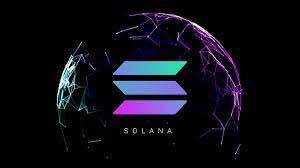SeedList’s arrival has captured the attention of the crypto world with a scale and speed rarely seen before. Within 24 hours of its launch, the institutional-grade crowdfunding platform drew more than 100,000 members to its Telegram and Twitter channels, a feat that underscores the strength of its vision and the hunger for a new model of token distribution. This breakthrough moment is more than just a show of numbers; it represents a dramatic shift away from venture capital–dominated fundraising and toward a model where communities and contributors take center stage.
For years, token allocations in crypto were largely controlled by private funds. By the time projects reached retail participants, valuations had often increased many times over, leaving little opportunity for meaningful participation. Developers, marketers, and grassroots supporters who helped create adoption rarely saw their contributions translate into early access. SeedList was built to change that. Its AI-driven system scores contributions across multiple domains and distributes allocations based on impact rather than insider status. The leap from 20,000 signups in the first hours to six figures in a single day shows just how eager the global community is for this approach.
“The response confirmed everything we believed,” said Brijesh Patel, co-founder of SeedList and former partner at Pronomos Capital, a venture firm backed by well-known names like Marc Andreessen, Balaji Srinivasan, and the Winklevoss twins. “For too long, allocations have been controlled by a handful of insiders. People want transparency and fairness, and they want recognition for the value they bring. SeedList’s launch proves that this demand is global, and the time for this change is now.” Patel noted that the momentum from the first day was not about hype but about a structural reorientation of how fundraising in Web3 is done.
Solana has become the natural home for this new wave. With unmatched transaction throughput and negligible costs, it enables mass participation in ways few other blockchains can. The network has already seen viral success with platforms like Pump.fun, which powered more than $500 million in token creation within minutes, and LetsBonk.fun, which has surpassed it in monthly revenue. Orca and Raydium add liquidity infrastructure that makes these launches sustainable. By building on Solana, SeedList aligns itself with an ecosystem that is already setting the standard for innovation in crowdfunding.
“Solana is the backbone that makes this vision possible,” explained CryptoSheldon, co-founder of SeedList and long-time Solana ecosystem strategist. “Its speed and cost efficiency are unmatched, but the real innovation comes when you combine that infrastructure with fairness. Our AI-driven allocation model ensures that contributors—developers, advisors, community builders—get allocations that reflect their impact. That’s the difference people responded to in such huge numbers.” His remarks highlight how SeedList is not only leveraging Solana’s technical strengths but also solving the fairness problem that legacy models ignored.
The contrast with old fundraising structures is clear. Legacy platforms often relied on random lotteries, capped allocations, or exclusive insider access. SeedList replaces those mechanisms with systems that track and reward tangible contributions. Developers who write code, influencers who spread awareness, and organizers who mobilize communities all see their efforts recognized with allocation. “The pyramid has been flipped,” said CryptoSheldon. “Instead of a few at the top reaping all the benefits, the contributors at the base are finally the ones being rewarded. That’s why we saw such an overwhelming response from every part of the world.”
The global-first design of SeedList is another reason its launch resonated so widely. Many existing platforms remain constrained by U.S.-centric compliance, limiting international participation. SeedList launched with a structure designed to welcome members everywhere. Its first 100,000 participants spanned not only North America and Europe but also Asia, Africa, and Latin America. These regions are often underrepresented in early-stage fundraising despite strong crypto adoption. Patel pointed to this inclusivity as a defining feature: “Web3 is borderless, and so is SeedList. The fact that people from every region joined us on day one shows how universal the demand for fairness really is.”
Looking forward, SeedList’s roadmap is designed to build on this explosive start with long-term sustainability. Planned features include contributor tiers that further incentivize meaningful participation, integrations with centralized exchanges and liquidity providers to ensure vibrant post-launch markets, and more advanced AI tools to maintain fairness at scale. The vision is not just about powering token raises but about fostering projects with engaged communities, lasting liquidity, and resilient governance long after their tokens launch.
The first day of SeedList has already set a new bar for what community-led crowdfunding can look like. With 100,000 members onboarded in 24 hours, the platform has shown that the industry is ready to leave behind VC-first models and embrace a contributor-first future. As Patel summarized, “This is just the beginning. The first day proved the appetite is there and it’s massive. SeedList is here to make sure that contributors—the people who build, support, and grow these projects—finally get the recognition and rewards they deserve.”



















